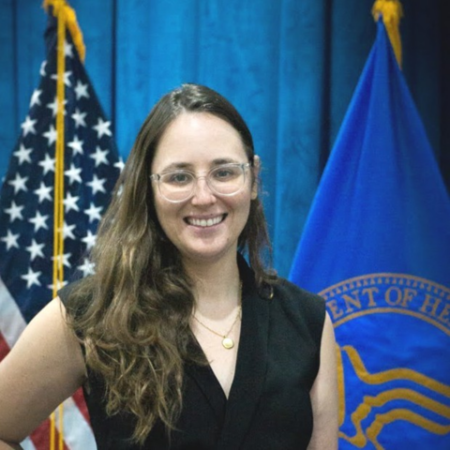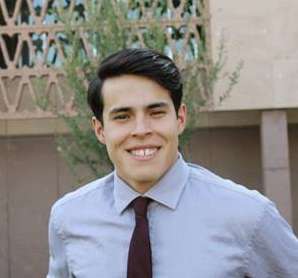With an enrolled base that is positively staggering – 87 million Americans for Medicaid, and 65 million for Medicare – the Department of Health and Human Services’ Centers for Medicare and Medicaid Services (CMS) – is among the very largest of Federal service providers to U.S. citizens, and its imperative to harness technology to improve citizen service is never ending.
We were lucky enough to catch up with one of the Federal technologists who is central to CMS’ effort to put better technology to work – and do it quickly – in order to keep the service improvements coming.
Andrea Fletcher, who is director of the CMS Digital Service – and earlier this summer took on the additional role of Chief Digital Strategy Officer at CMS – walked us through her group’s mission, its recent work on creating better public-facing websites, progress on the open-source front, efforts to improve hiring processes, and the benefits of her prior experience at the U.S. Digital Service.

MeriTalk: We know that the CMS Digital Service has a few major aims including modernizing CMS systems, improving the design of healthcare experiences, and working on policy development. Can you shed some light on what your team is doing, and why that work is important?
Fletcher: Our team sits in the office of the administrator at CMS. We’re somewhere usually around 30 designers, software engineers, and product managers. A lot of the work that we end up doing is supporting different teams across CMS – we call them components – at CMS centers like the Center for Medicare or the Center for Medicaid and Children’s Health Insurance Program (CHIP) services, or the marketplace on healthcare.gov. We are really supporting those teams in what their biggest problems are with technology.
For example, with Medicare, we’ve been working on Medicare payment system modernization for almost five years now. CMS processes 4.5 percent of the U.S. Gross Domestic Product through Medicare, and it’s very important to make sure that those systems are reliable, secure, using modern tech stacks, and have robust business processes to ensure that they’re really efficient. It’s an ongoing project, and incredibly important to CMS and Medicare beneficiaries.
Our team plays a key role in supporting the tech teams that are doing that designing and implementing modernization efforts. Our role is to support the design of programs and service delivery, and rethink the way that we’re providing healthcare to the American people.
MeriTalk: Can you tell us about a couple of projects that you’re working on now?
Fletcher: We launched two websites this year as part of our efforts to improve public facing websites and content. For the first, we partnered with Substance Abuse and Mental Services Administration (SAMHSA) on a website called findsupport.gov. This aims to help people find support for mental health, substance and alcohol use. A big chunk of that work was helping people navigate through health insurance using plain language and guiding them through the steps of where to find resources for Medicare and Medicaid.
The second website we launched this year was around the No Surprises Act called cms.gov/medical-bill-rights. The goal of this site is for people who get medical bills that they don’t understand . We already have a phenomenal call center that they can call, and for the website we did a ton of user research and work with different outside groups to understand what information people need. We have a lot of guidance pages and really there are no wrong questions – everybody will get help.
We have a great history of open source and we looked at that as an opportunity for CMS to do more work with the health care sector, which there are a ton of healthcare IT companies.
We also hired our first open-source lead at CMS. We’ve had three coding and forward fellows this summer, and we have two new digital fellows arriving to really support the open-source delivery at CMS. We already have some very large open-source products – particularly Blue Button 2.0 and Data at the Point of Care – which are led by the Office of Enterprise Data Analytics (OEDA). We’re helping Medicare beneficiaries gain access to their data.
MeriTalk: What are the sorts of challenges that you and your agency face when it comes to bringing digital services to those that are signing up for Medicare and Medicaid?
Fletcher: I will always talk about the challenge of hiring in the Federal government – in particular hiring in technical talent and skill sets. I wouldn’t even say that the challenge is that people don’t want to come and work in the government – they do.
The problem isn’t that people don’t want to work in the government. I think most of the challenges seem to be within our hiring processes and how difficult it is to post a job, have that posting make sense to people who are applying, and then to hire them quickly.
Most people in the tech sector will have multiple offers within two weeks. So the fact that it takes us sometimes months to make an offer is not ideal – we just lose great talent to government being too slow. That’s one of the ways that our team is a little bit different – we’re able to move a little bit faster and think differently about hiring technical talent in government.
Trying to de-jargon some of the process is also important. When people are applying, they don’t know the difference between SAMHSA and CMS, or other parts of HHS. And then when we get down even further, they don’t know the differences between our centers and offices, so navigating all of the acronyms and understanding what the job is can be really difficult to a person who is used to simple titles and job descriptions.
MeriTalk: What are one or two issues that you see tackling to combine technology and healthcare to give the best customer experience?
Fletcher: Our designer team have been focused a lot on accessibility, and increasing the accessibility of services online. Why that’s important is, by definition, people are coming to our website because they have a medical condition or they’re looking for healthcare. The Medicare population is generally over 65, so building websites and building tools that are accessible to people with low vision, cognitive disabilities, and for people whose first language is not English, becomes incredibly important to improving those services. Accessibility is key to improving the customer experience in healthcare.
We’ve also been focusing a lot on identity management and verification because that is another piece of the puzzle to signing up for services. Tools like two-factor authentication and zero trust cybersecurity sound great, but if you are unhoused, or you change your phone often, or you don’t have steady internet, then being able to authenticate yourself twice might be challenging. We hear a lot about internet services in rural areas and how people can’t sign up online or can’t access their information online because the internet is poor.
Making sure that our websites are not only mobile friendly, but also able to function in low connectivity helps provide more digital equity to our beneficiaries. It’s not just about throwing a website up and making it look pretty. There are other things that we really need to think about to improve services – mostly for people who are really vulnerable.
MeriTalk: Are you using technology project models learned from your time at U.S. Digital Service? And are there any differences to those approaches in the healthcare sector, or specifically at CMS?
Fletcher: We use the Digital Services Playbook. We run a lot of discovery sprints with CMS component partners to help understand and define the problem. Because a lot of the time, technology isn’t just the only solution to the problem. We can build a form and put it on a website, but if that form goes into a system that can’t handle an increase in traffic, or isn’t collecting the right data to make decisions, then it’s just another link on a government website. It’s not useful.
A lot of the plays the digital service team at CMS are running we’ve learned from the U.S. Digital Service (USDS). Many people on our team are former USDS, and current USDS – there is a lot of cross pollination. I think what varies from USDS is that we’re working deep within an agency. At the end of the day, we just need the work to get done and get done well.

